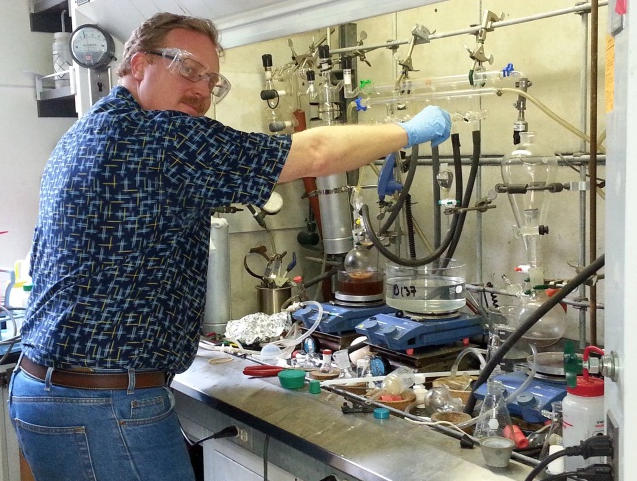[SatNews] AFRL scientist Dr. Rusty Blanski recently teamed with Dr. Robert Grubbs, a Nobel Laureate from the California Institute of Technology (Caltech) to develop a groundbreaking new technology that could reduce erosion in metallic rocket components, reduce production costs, and open the door for the use of new, environmentally-friendly propellants.
Working under AFOSR's Visiting Scientist Program and a Cooperative Research and Development project with Caltech, Dr. Blanski, an expert in the field of oxidation-resistant materials, worked side-by-side with Dr. Grubbs, an expert in organometallic and synthetic catalysts. Through this collaboration, the two researchers sought to study techniques that could create a new class of olefin metathesis catalysts and allow the development of new and more affordable oxidation-resistant metal coatings for rocket engine components.
Oxidation is an issue in rocket engines and components because their extreme operational environments, including temperatures that can reach 3500 degrees Fahrenheit, accelerate oxidation, causing premature erosion and weakening of components. In the past, exotic metals that are capable of surviving such extreme conditions have been used for these components, making the parts difficult to manufacture and very costly.
Dr. Blanski developed the organometallic precursors for a process called Supercritical Chemical Fluid Deposition, which allows the deposition of a layer of oxidation-resistant metal, such as iridium or nickel, onto almost any metal surface. This process allows uniform coating on even small, intricate parts and thin slots, so that the entire surface is protected. This process makes possible the use of less expensive, lighter, and more easily-obtainable component materials.

Dr. Rusty Blanski turns off a reaction in his lab. He and Nobel Laureate Dr. Robert Grubbs collaborated to develop a new technology that could reduce erosion in metallic rocket components, reduce production costs, and open the door for the use of new, environmentally-friendly propellants. (Contributed photo)
Through their collaborative efforts at Caltech, Dr. Blanski and Dr. Grubbs developed new precursors and synthetic methodologies to allow the process to be further refined to allow the deposition to occur at lower temperatures, which increases the metal deposit yield and speeds the coating process.
This coating technology can be applied to catalyst bed-plates used to create a protective surface for chemically-induced, in-space thrusters. This work is important because currently there is no type of catalyst bed that can withstand the oxidation environment necessary for the AFRL-developed AF-M315 Green Monopropellant. Using the precursors developed through Dr. Blanski's and Dr. Grubbs' work could enable the use of this and other types of environmentally-friendly propellants for in-space propulsion.
Additionally, the oxidation protection enabled by this process could also be used for other rocket components such as nozzle walls or combustion chambers, to protect the cooling channels from eroding. Turbine engines may also benefit from this technology.
Dr. Blanski says the collaboration was an exciting opportunity that offered benefits for both sides.
"It was a wonderful experience working in Bob's labs and interacting with him and his highly talented research group," says Dr. Blanski. "It is also a true win-win collaboration, where the Air Force receives technology from Caltech and Caltech benefits with the development of a new class of olefin metathesis catalysts."
Caltech recently filed a joint provisional patent on behalf of Drs. Blanski and Grubbs to allow for future development and potential commercial use of this technology.

